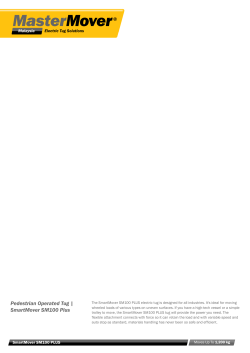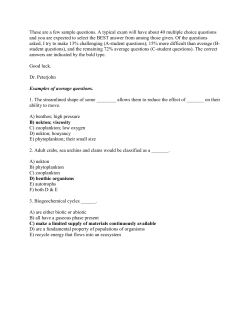
T - IFISC
Strongly coupled quantum heat machines David Gelbwaser-Klimovsky Palma, 2015 D. G.-K. Alán Aspuru-Guzik, arXiv:1504.04744 Carnot machines Components 1. Working fluid, the system (Ex. Gas) 2. Hot and cold bath 3. External cyclic driving of the system. It extracts or invests work (Piston) The second law limits the machine efficiency Engine Extracted Power Absorbed heat (Invested energy) TH TH JH JH P P JC TC Engine JC TC Refrigerator Continuous quantum machine K Szczygielski, D. G. –K., R Alicki Physical Review E 87 (1), 012120 (ω0 ) Components 1. Working fluid: (qubit, TLS). 2. Hot and cold bath (normal modes), permanently coupled to the system (weak coupling). 3. A piston (External driving) periodically drives the system and gets or gives work. Review: D. G.-K, W. Niedenzu, G. Kurizki arXiv:1503.01195 Coupling specturm KMS Condition o (resonant baths) Lindblad master equation (weak coupling, “small” ) Thermodynamic quantities (analytic expressions) Baths at equilibrium KMS condition Weak coupling limitations -PP ? Strong coupling Lindblad equations are no longer valid! Interphase B S Weak Coupling B S Strong Coupling Redefining the system and the bath B S S-B strong coupling D. P. McCutcheon and A. Nazir, NJP 12, 113042 (2010). B’ S’ S’-B’ effective weak coupling Particular example part First coupling Second coupling Transformed Hamiltonian First coupling Transformed Hamiltonian Second coupling Effective weak coupling First coupling Original spectrum Weak coupling Validity limit Transformed spectrum Second coupling Coupling Spectrum WEAK COUPLING: Modes should be resonant! o STRONG COUPLING: Harmonic Modes also contribute! o KMS First coupling Cold bath operator Second coupling Hot bath operator Cold bath operator Hot bath Cold bath Power Maximum power Ultra-strong coupling Weak coupling B S Similar for cooling power! Efficiency May be larger than Carnot ???? Similar for cooling Conclusions 1. 2. 3.
© Copyright 2025













